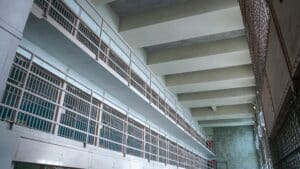By Matt Clarke / Prison Legal News
Two studies by the LBJ School of Public Affairs at the University of Texas at Austin found that juveniles held in Texas jails while awaiting trial as adults are often isolated with no access to education programs, and that violence remains prevalent in state juvenile facilities in spite of recent reforms.
Texas’ juvenile system, which has been renamed the Texas Juvenile Justice Department (TJJD), was rocked by months of violence during 2012 in the agency’s six secure facilities – especially the Giddings State School and Corsicana Residential Treatment Center. The spike in violence echoed widespread reports of abuse and misconduct in 2007 that resulted in substantial changes in the state’s juvenile justice system.
For the first study by the LBJ School of Public Affairs (LBJ), 41 jails were asked to complete a survey related to incarcerated juveniles, their access to programs and whether they were separated from adult prisoners. The results indicated there were few prisoners under the age of 17 held in Texas jails – only 34 during the survey months of October and November 2011. The survey also showed that in 30 of the jails – roughly three-fourths – adults and juveniles were incarcerated separately. However, the report noted that juveniles might come into contact with adult prisoners during showers, recreation or meals.
“National research indicates that juveniles in adult facilities are five times more likely to be victims of sexual abuse and rape than youths who are kept in the juvenile system,” according to the report.
On May 7, 2012, two days before the LBJ report was released, Texas Attorney General Greg Abbott issued a ruling requiring jails to separate adult and juvenile prisoners.






